Table of Contents
The Ligustrum Bonsai knew as Glossy privet or the Chinese privet is native to China and East Asia. In its natural habitat, this evergreen shrubby tree is widely cultivated as a landscape plant, but in the united states, they are mostly grown as a houseplant and used majorly for ornamental purposes. They are characterized during late spring and early summer with their puffy white flowers and their minuscule blue-black berries during fall.
The tree belongs to the Olive family and has about 50 or more evergreen and deciduous subspecies with distinctive leaf colors and shapes. Ligustrum plants can grow up to about 30 feet if left to grow, but when grown as a Bonsai or houseplant, they can be trimmed to standard height. Learn all you need to know about Ligustrum care, as well as some other interesting facts about the tree now.
| Scientific Name | Ligustrum lucidum |
| Family | Oleaceae |
| Average Height | 12 to 20 feet |
| Average Spread | 12 to 20 feet |
| Origin Countries | China, Korea, Japan |
| Type | Broadleaf evergreen |
| Flower Bloom Time | August to September |
| Flower Color | Creamy white |
| Attracts | Butterflies, scales, aphids |
| Water | Dry |
| Sunlight | Full sun |
| Maintenance | Medium |
Can we Bonsai a Ligustrum tree?
Yes, you can Bonsai a Ligustrum tree. The following are some amazing qualities that make a Ligustrum tree an excellent specimen for both experienced and inexperienced Bonsai growers.
- Ligustrum is a fast-growing plant.
- They can be easily styled and print tolerant.
- They are easy to care for.
- It has vigorous roots and strong trunks, which makes them a natural Bonsai with artistic structure.
Ligustrum Bonsai History
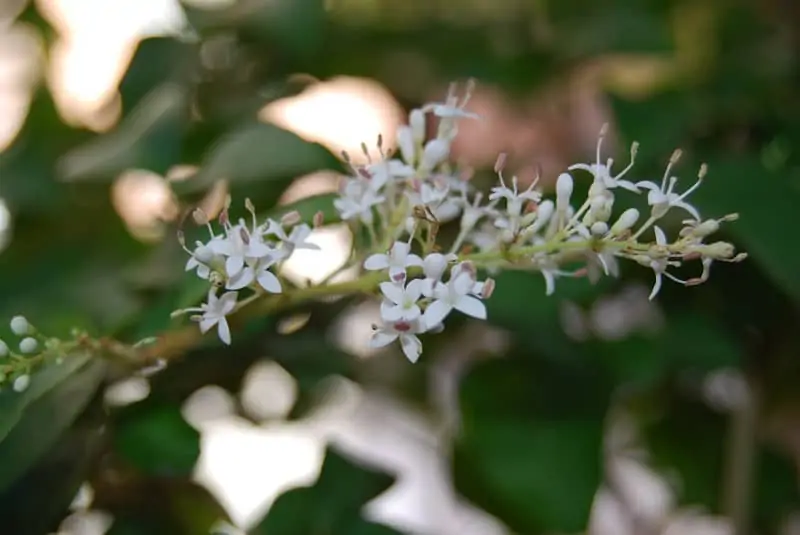
Ligustrum Bonsai was first discovered in China before it was introduced to both Australia and New Zealand in 1800. In these counties, Ligustrum was extensively cultivated to be used for hedges and windbreaks. In the year 1852, China also introduced the Ligustrum tree to the united states where it was grown as houseplants for ornamental purposes.
Ligustrum Bonsai scientific name
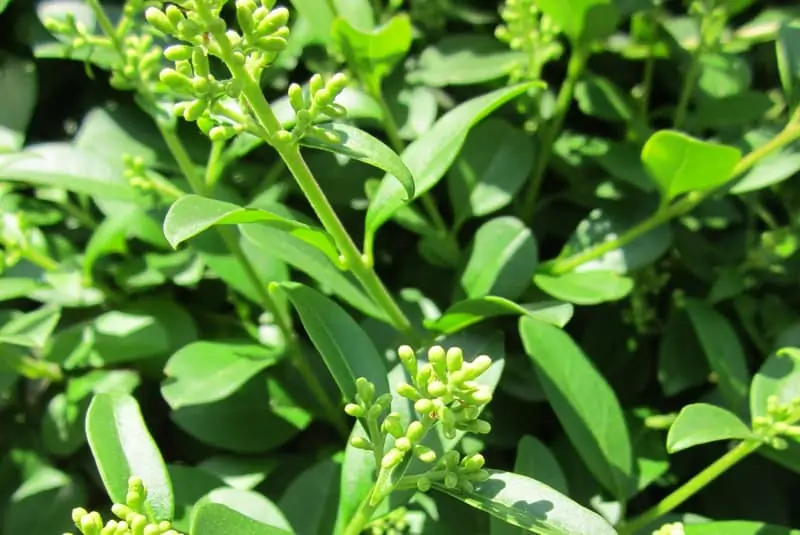
The scientific name of Ligustrum Bonsai is Ligustrum lucidum
Ligustrum Bonsai care
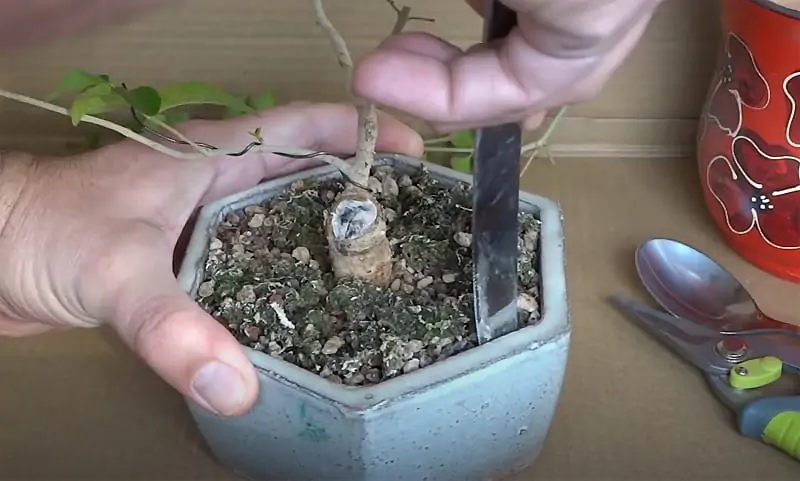
Ligustrum Bonsai is a fast-grower and easy to care for, but any shortcomings due to lack of proper knowledge about their care requirement will impact negatively on the tree. Check below for details on how to treat your Ligustrum tree in the best way.
Ligustrum Bonsai Temperature
Ligustrum Bonsai can tolerate full sun and are also cold hardy to a certain level. However, if you notice that the outside temperature has dropped below 20°, it is advisable to bring them in because a ligustrum tree is exposed to extreme cold, it drops its leaves. Although this is seen by most experts as a mere reaction and not likely to cause any permanent damage to your tree.
Ligustrum Bonsai Fertilizer
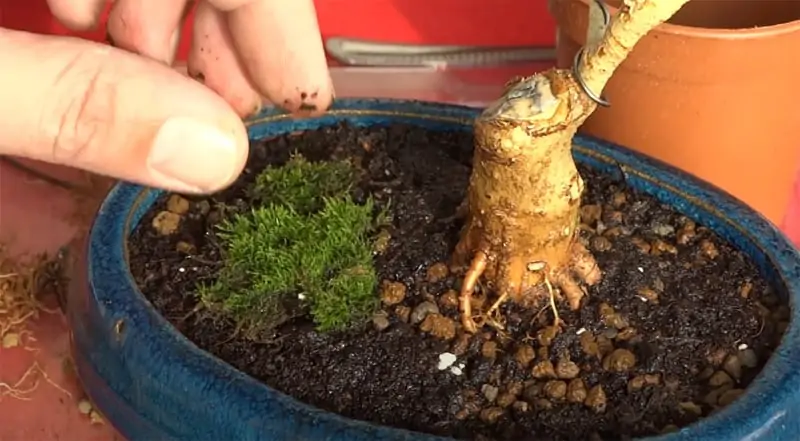
The best time to fertilize your Ligustrum Bonsai is anytime you notice that new growths are starting to appear on your Ligustrum tree. You can make use of either a chemical fertilizer that has been diluted to one-half its strength or organic liquid fertilizer.
During the tree’s growing seasons (spring), fertilizers should be applied every 2 weeks and applied once a month during winter. The most important thing to remember when making use of a liquid fertilizer is that it must be applied on moisturized soil to achieve the best result.
Ligustrum Bonsai pruning & trimming
Ligustrum is a fast-grower, and as a result, you must be very observant about trimming new growths. A ligustrum tree can produce about 7 or more clusters of leaves as new growth at once (that is how fast they can grow). Hence, you must always trim these new sprouts back, leaving only about two leaves on each new growth cluster.
All noticeable suckers found near the base of the tree should be completely pruned off because they usually prevent nutrients from getting to the leaves at the very top of the ligustrum tree. The best time to prune your Ligustrum tree is early spring before new growths start to emerge.
Ligustrum Bonsai styling
The best time to style or wire a Ligustrum Bonsai tree is late spring. Fortunately enough, Ligustrum Bonsai is one tree species that respond well to shaping and wiring. Ligustrum Bonsai has flexible barks which makes wire shaping very easy.
Also, because they grow fast, the tree’s bark can quickly recover from scars caused by wiring as long as the cut or scar is not too deep. Nonetheless, you must be exercise extreme caution during the whole process because their highly sensitive bark also means their branches can be easily damaged.
Ligustrum Bonsai repotting
Since Ligustrum Bonsai is a fast-growing plant with a vigorous root system, it is highly recommended that you repot the tree every year. Also, since they can tolerate root pruning, their roots should be cut back at least once every 2 to 3 years. During the transplant, make use of a standard soil mix.
Ligustrum Bonsai pest and diseases
Ligustrum Bonsai tree is vulnerable to attacks from scales, aphids, weevils, and whiteflies. But the good news is infections from any of these insects can be readily controlled with the use of a specific insecticide. However, if your tree is infested by mildew or wilt your best bet is spraying affected spots with special fungicides.
Ligustrum Bonsai soil
One of the reasons experts usually recommend a Ligustrum Bonsai to young Bonsai growers with little training is that they can be successfully grown in most soil mix types; save for the Ligustrum sinense that prefers a soil mix with a moderate amount of salt in it. But in general, you should avoid planting any of the Ligustrum species in poor drainage soil or in a soil mix where water can easily accumulate.
Ligustrum Bonsai watering
Ligustrum is a hardy plant, and because of this, you don’t have to water them as you would do for most other Bonsai trees.
During summer, you should water your ligustrum tree regularly so that the soil will not dry out. However, during hotter days, you may be required to water your tree at least twice a day, although you must be careful not to overwater them because they are vulnerable to root rot.
Water your ligustrum tree anytime you notice the top layer of the soil is completely dry. You can also use your finger to feel the moisture level of the soil.
Ligustrum Bonsai Sunlight requirement
Your Ligustrum Bonsai tree will benefit from the full sun as well as in full shade. Therefore, they can be successfully grown both indoors and outdoors; however, you must be wary of the prevailing level of temperature as that will determine the appropriate time to take them outside or bring them indoors.
For instance, it is highly recommended that you bring your Ligustrum tree indoors once the prevailing outside temperature has dropped below 40°.
Ligustrum Bonsai types
There are more than 50 cultivars or subspecies of the Ligustrum tree, however, of all these species, only 3 out of them are widely used as Bonsai specimens. According to growers, these 3 species have certain traits that make them a perfect choice for Bonsai specimens. These 3 species include; Ligustrum sinense Bonsai, Ligustrum overlifolium, Ligustrum lucidum, Ligustrum quihoui, Ligustrum nitida. Check below for a brief description of all of the aforementioned Ligustrum species.
Ligustrum sinense Bonsai
The Ligustrum sinense also known as the Japanese privet is a shrubby plant the belongs to the family of Oleaceae. The tree is usually very small and can only grow up to 6 to 13 feet tall. It is characterized by its smelly flowers that bloom around late springtime, indestructible thickets, and toxic berries. In the southeastern USA, the tree is said to have become an invasive weed.
Like most other Ligustrum species, the Ligustrum sinense is also a fast grower and can be easily maintained. It is poor soil tolerant, alkaline tolerant, shade tolerant, and pollution tolerant.
Ligustrum ovalifolium Bonsai
The Ligustrum Ovalifolium Bonsai is a fast-growing, dense deciduous shrubby plant from the Oleaceae family. The Ligustrum Ovalifolium Bonsai usually grows into a small plant and they can only grow up to 3.0 to 4.6 m tall and wide. The tree is known for its thick, green fleshy leaves on the top and greenish-yellow leaves on the lower part of the tree.
The Ligustrum ovalifolium blossom its flowers around midsummer; these flowers are distinctively identified with their abundant white colors and smelly of ours most people find offensive. When grown under appropriate conditions, they may produce fruits in thousands. These fruits exist in clusters, with colors ranging from purple to black. The fruits are considered to be poisonous to humans but are nontoxic to birds.
Ligustrum quihoui Bonsai
The Ligustrum quihoui Bonsai is a semi-evergreen shrubby plant native to Korea and China. Just like their other counterparts from the Oleaceae family, they are also usually small and they can only grow up to 3m tall and wide if left unpruned.
It is characterized by its dark green foliages with spots of beautiful creamy flowers that blossom from mid to late summer. These beautiful blossoms make the tree one of the top destinations for bees and butterflies. They are moderately tolerant to low humidity and drought and can survive on any kind of soil.
Ligustrum Nitida Bonsai
The Ligustrum Nitida is also an evergreen shrubby plant from the Oleaceae family. This tree is usually very small and can grow up to 10 feet when left unpruned, but is grown as a bonsai, it can be trimmed to about 1.6ft. They are fast-growing, easy to grow, and share the same habitat with the Chinese Elms bonsai. They are characterized by their richly green-colored leaves and prefer well-draining soil and loves to stay moisturized all the time.
Ligustrum Bonsai tree good for indoors or outdoors?
Ligustrum Bonsai is neither an outdoor plant nor is it an indoor plant. The best way to raise a Ligustrum Bonsai is by switching their placement between outdoors and indoors so that they can take advantage of the prevailing temperature in both conditions.
They can be raised successfully indoors under high light, but they will appreciate it more if they are taken outside to enjoy the day’s full sunlight. When the outdoor temperature drops below 40°, it is safer to bring Ligustrum Bonsai indoors.
How to Bonsai a Ligustrum tree
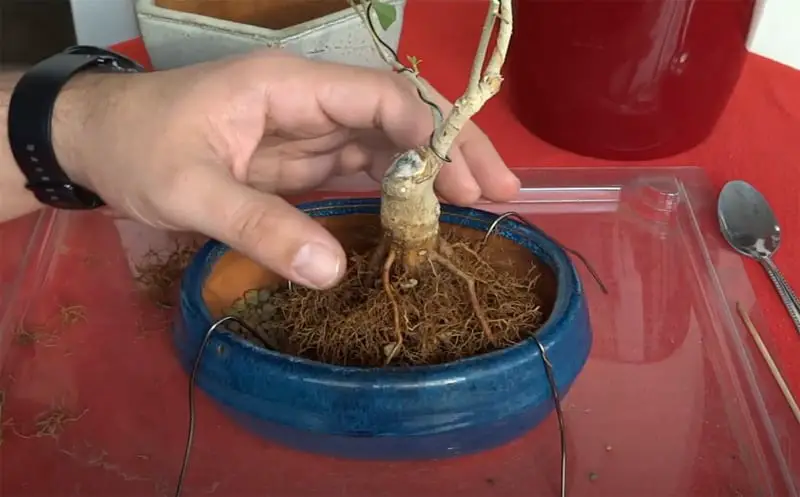
You can start a Ligustrum Bonsai from either, cuttings, air layering, or seeds. Although most people prefer the first two methods as cultivation by seed usually takes a lot of time.
Where do I get a Ligustrum Bonsai tree?
The easiest way for you the get a Ligustrum tree is by ordering from online dealers or buying one directly from a plant store. This will lessen your burden because you wouldn’t have to go through the rigorous process of having to cultivate seedlings. Although if you are someone like me who loves to monitor the growth of the tree at each stage, you can go for the seedlings.
Planting Ligustrum Bonsai tree
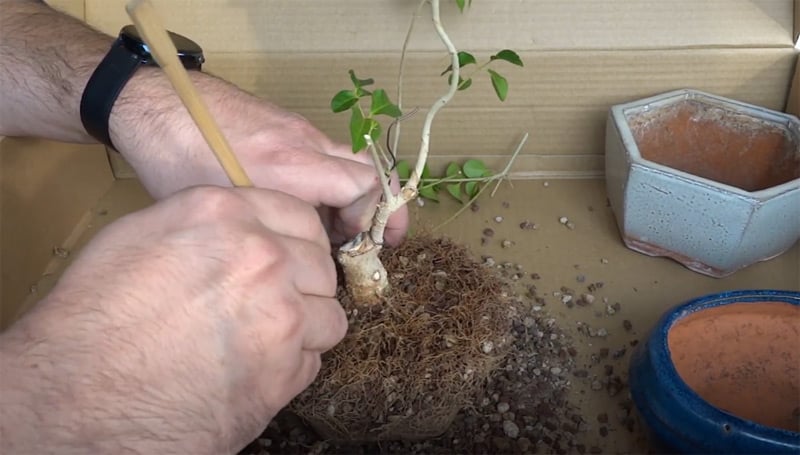
Ligustrum Bonsai trees are vivacious, they can survive on any kind of soil. However, have in mind that what the choice of your soil mix might be, it must encourage drainage. Ideally, the Ligustrum tree will thrive better on a soil mix comprising 60% aggregate (pumice or clay pellet) and 40% organic matter (compost soil).
As for your Ligustrum Bonsai placement, place your Ligustrum Bonsai tree where they will be exposed to full sunlight, to increase their chances of flowering and encourage fruit production. They can also be raised indoors as long as you can maintain a reasonable level of humidity.
Why is my Sunshine Ligustrum Bonsai losing leaves?
If your Sunshine Ligustrum Bonsai is losing its leaves, it is most likely as a result of being overwatered or underwatered. Other possible causes include overexposure to sun or cold and pest infections.
Is Ligustrum Bonsai safe for pests?
No, Ligustrum Bonsai is not safe for both humans and pets.
Ligustrum is said to contain toxic glycosides which affect the gastrointestinal system. Although the fruits of certain species like the ligustrum ovalifolium are believed to be nontoxic to birds but are poisonous to humans. However, I would suggest that you keep the tree regardless of the species away from the reach of children and pets altogether.
![Pittosporum Bonsai [Pittosporum Tobira]](https://www.bonsai-express.com/wp-content/uploads/2022/05/Pittosporum-Bonsai-365x200.jpg)
![Sorbus Bonsai [Sorbus Aucuparia]](https://www.bonsai-express.com/wp-content/uploads/2022/05/Sorbus-Bonsai-365x200.jpg)
![Tsuga Bonsai [Tsuga Canadensis]](https://www.bonsai-express.com/wp-content/uploads/2022/05/Tsuga-Bonsai-365x200.jpg)
![Tamarix Bonsai [Tamarix Ramosissima]](https://www.bonsai-express.com/wp-content/uploads/2022/05/Tamarix-Bonsai-365x200.jpg)